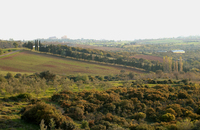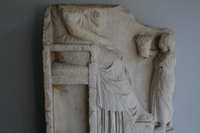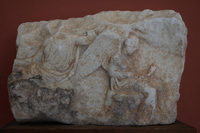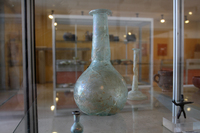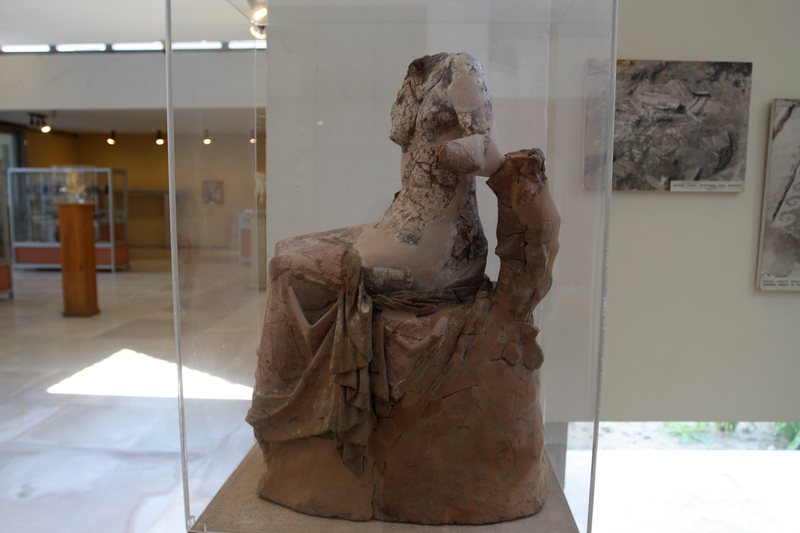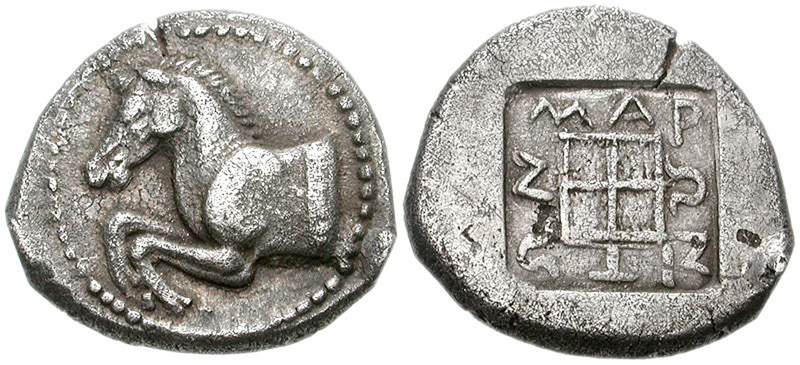Ancient Port Colonization
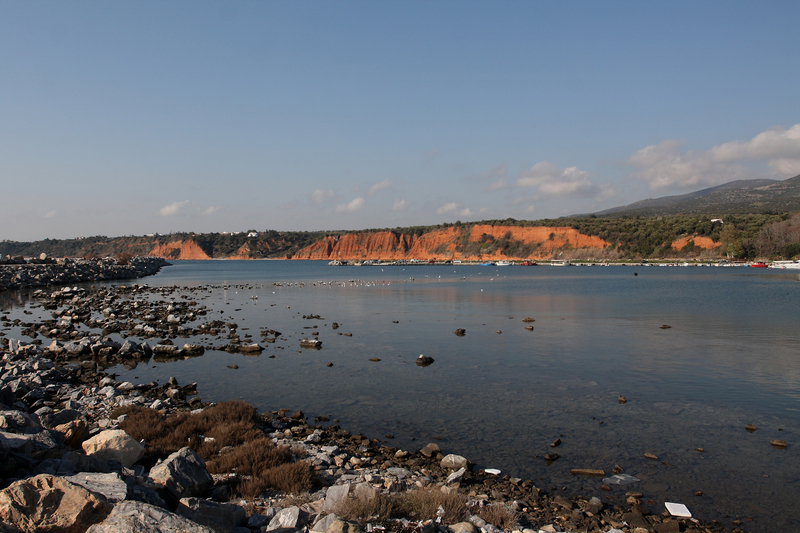

The Greeks of the Eastern Aegean, during the 8th century BC, colonized the land of the Thracian tribes, seeking new homes. In the middle of the 7th century BC, habitants of the island of Chios, founded the ancient Maronia, which was very close to the preexisted and older Ismaros. The name of the city is considered to be linked to the Homeric Maronas, son of Evanthos, and priest at Ismaros of the god Apollo. Gradually, there will be a mutual cultural influence between the colonists and the local population. In the new region, the colonists found fertile plains in order to grow olives, cereals and vines- crops which were bonded with the colonists for long time- but also they found a natural harbor which will be of great importance for the promotion of their trade. Remnants of the jetty, dated on the 4th century BC, preserved on the east side of the modern port of St. Charalambos. The location of the colony is very privileged, as it offers a great views all the way from Thassos to Samothrace. However, there was an ongoing conflict with the neighbor Thassians, due to the fact that the very competitive nearby Strymi, which was a Thassian colony, was also thriving. These controversies begun during the Archaic period and they appear again in 360/361 BC, this also showed the westward expanse of the area controlled by Maronia.
The exploitation of the rich Thracian inland, and activities such as the grain production, cultivation of olive trees and especially vines, but also the extensive livestock, (an occupation of the inhabitants even at present), in combination with trade, brought great economic growth and prosperity in the ancient city.
On the ground floor of the Archaeological Museum of Komotini there are several tombstones exhibited, on which you can see the different types of occupations of the people of the ancient city, for example you will be able to spot doctors but also greengrocers.
At this point we should state, that another proof of the growth and development of the city could also be the coinage of Maronia, where its coins were widely spread in all the known ancient world. The metal was guaranteed by commercial trading.
The beginning of coinage in the city took place during 520-515 BC. On the front side of the coins, the representation is associated with the worship of Dionysus and also with the cultivation of vines.
Moreover, there was also a representation of a horse, which is another symbol of the city, and is connected with Kikones. On the back side, there is a variation of representations so we could see bunches of grapes, rams, concave squares with crosses but also the figure of Hercules.
At the Archaeological Museum of Komotini there are exhibited several findings from the ancient Maronia.
Funerary relief depicting, on the left, a dead person in the shape of a seated woman, and on the right, a standing young maidservant. This is dated back to the 4th century BC.
From 1969 to 1988 the excavations in the ancient city took place under the supervision of Evangelos Pentazos. Since 1971 Maronia became part of the excavations project of the Archaeological Society of Athens. It is worth mentioning that the finds dated from the 4th century onwards to the Hellenistic and the Roman period. The very few findings which are dated even before then, are only small fragments of reliefs, many of which were found embedded in buildings of the modern village of Maronia or they have unknown origins.
Part of the frieze of a funerary monument of 400 BC, with the Persephone's representation and the winged figure (this is the departed young man).
Clay statuette of Aphrodite from Maronia, dated in the later classical period.
Glass offerings from Maronia, dated in the 1st century BC.
In Maronia, coins from the end of the 6th century BC have been found, and many coins from the period of the city’s prosperity, namely in the 5th and 4th century BC.
Silver didrachm coin from Maronia, dated in the Classical period: A hemisected horse is illustrated galloping and facing left in a circular pattern with dots. It dates back to the 5th century BC (around 495-449 BC), with diameter 20 mm and weight 7.41 grams. The word MARONITE is inscribed on the back, around a square, which is divided into quarters and the whole composition is inside an incuse square.
Silver tetradrachm from Maronia dated in the Roman era: The bust of Dionysus at a young age is depicted, wreathed with ivy and facing right. Dated in the 2nd century BC (around 146-145 BC), with diameter 33.9 mm and weight 16.43 grams. On the back, the god Dionysus, naked, facing slightly left, holding in his right hand a bunch of grapes and in his left hand a cloak and two flutes. In the bottom left the monogram OPA is engraved. The inscription states: "DIONYSUS SAVIOR OF MARONITES". It resembles with coins of Thassos from the same period.


